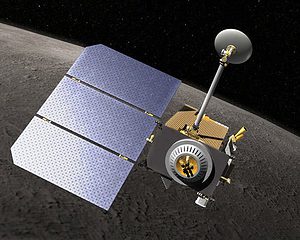According to recent findings as a result of observations from NASA’s Lunar Reconnaissance Orbiter (LRO), it seems like the moon’s pale atmosphere contains helium, a fact in question for some forty years since the first hints were discovered on the lunar surface during the Apollo missions.

The moon is often considered not to have an atmosphere, and for practical reasons Earth’s satellite is many times regarded as being surrounded in an envelope of vacuum. However, scientists frequently refer to what’s called the “lunar atmosphere” – a thin, very fragile layer of gaseous atomic and molecular particles. However, this is atmosphere is so tiny, that’s often negligible. How tiny? It’s less than one hundred trillionth of Earth’s atmospheric density at sea level.
This means that it’s surface offers practically zero protection against solar radiation exposure and meteors can simply hit the moon without encountering any resistance. Still, tiny as it is, the moon has an atmosphere, and scientists have been studying it for a very long time.
The latest findings from the LRO is set to confirm the very first evidence of the presence of Helium in the moon’s atmosphere by the Lunar Atmosphere Composition Experiment (LACE), which was deployed by moonwalking Apollo 17 astronauts in 1972. The team of researchers involved the observations, used the spectrometer aboard the orbiter to examine the far ultraviolet emissions visible in the atmosphere, detecting helium over a period spanning more than 50 orbits. Various techniques were used to measure the Helium levels on the moon’s surface in order to rule out possible interplanetary readings.
How does Helium get on moon in first place?
“The question now becomes, does the helium originate from inside the moon — for example, due to radioactive decay in rocks — or from an exterior source, such as the solar wind?” Alan Stern, of the Southwest Research Institute in Boulder, Colo., said in a statement. Stern is principal investigator of LRO’s Lyman Alpha Mapping Project spectrometer, or LAMP.
Radioactive decay within the crust and mantle leads to a reaction which releases helium and radon. However, the major proportion of helium on the moon’s surface is most likely due to solar wind and light. Also, micrometeorite bombardment is also considered a factor.
“If we find the solar wind is responsible, that will teach us a lot about how the same process works in other airless bodies,” Stern said.
The initial 1972 experiments showed an increase in helium abundance as night progressed. Scientists believe this is due to the phenomenon of atmospheric cooling which concentrates atoms at lower altitudes. Most likely, these findings will be followed up by NASA scientists.






